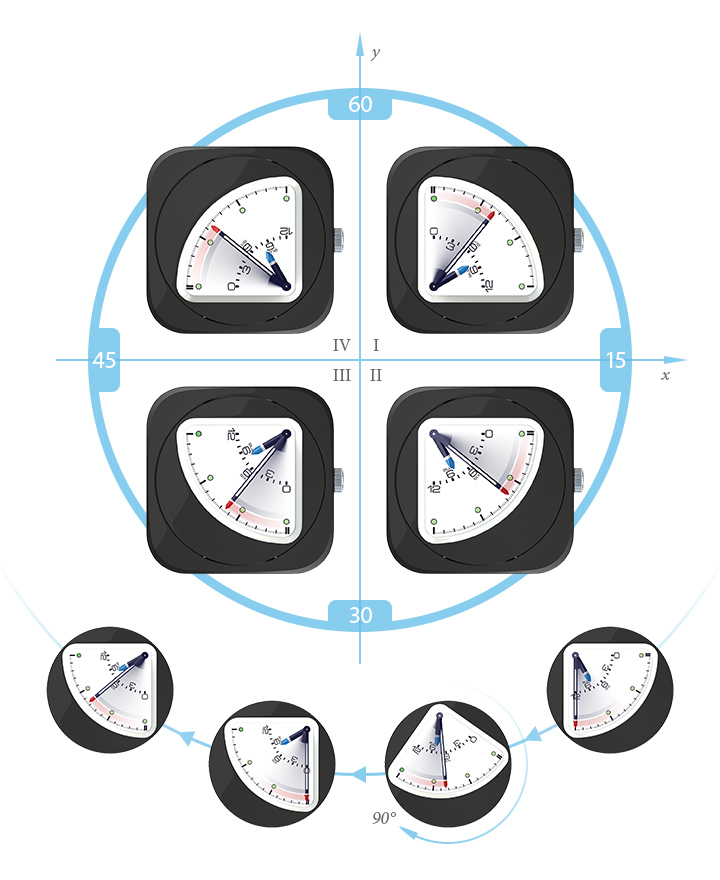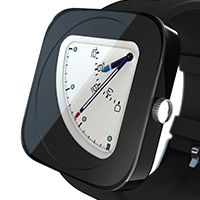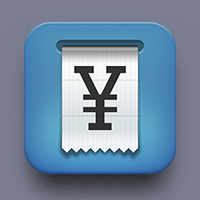Concept
Living in a fast pace world of today, it has almost become an instinct for people to know what hour of a day is. On most occasions, when people lift up their wrists and look at their watches for reference of time, ignoring the hour hand, what they are concerned about is only where the minute hand is pointing to. “How much of this hour has passed away?” “How many minutes do I have exactly before I enter the next hour?”
Based on this scenario, the ever round-shaped dashboard of a conventional watch is trimmed, leaving only half a pi, one quadrant, consisting of 15 minutes. The quadrant, in which the minute hand is traveling, rotates as time passes when it enters the next 15 minutes. The shape of the quadrant is representational for people to grasp the progressive idea of an hour, and the enlarged minute scale let them see more easily and clearly if they need to.
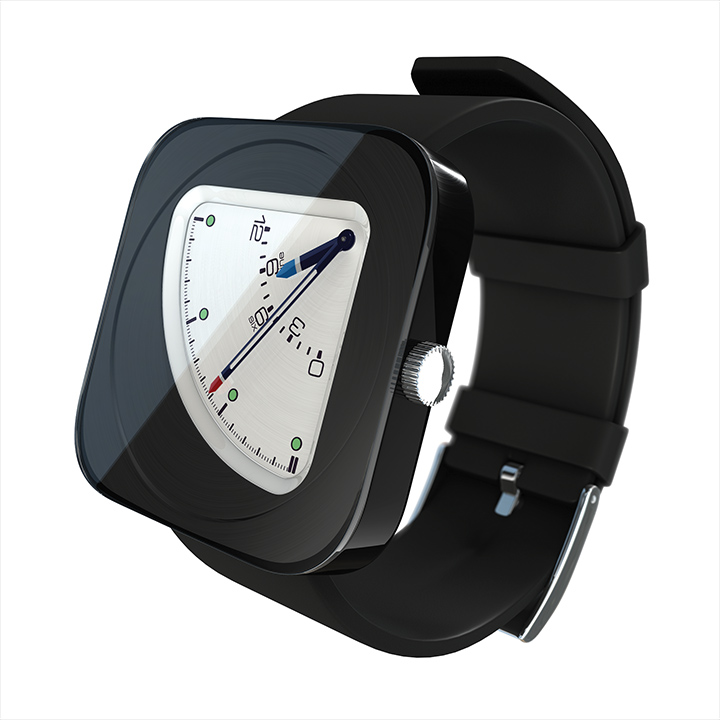
Dashboard Core
The minute and hour hands share the same pivot (Pivot A) for rotation, while the dashboard core rotates by its own circular center (Pivot B).
The core rotates 90 degrees clockwise every 15 minutes, traveling from one quadrant to the next. Meanwhile, the minute hand rotates backwards (counter-clockwise) to the starting point and starts moving again.
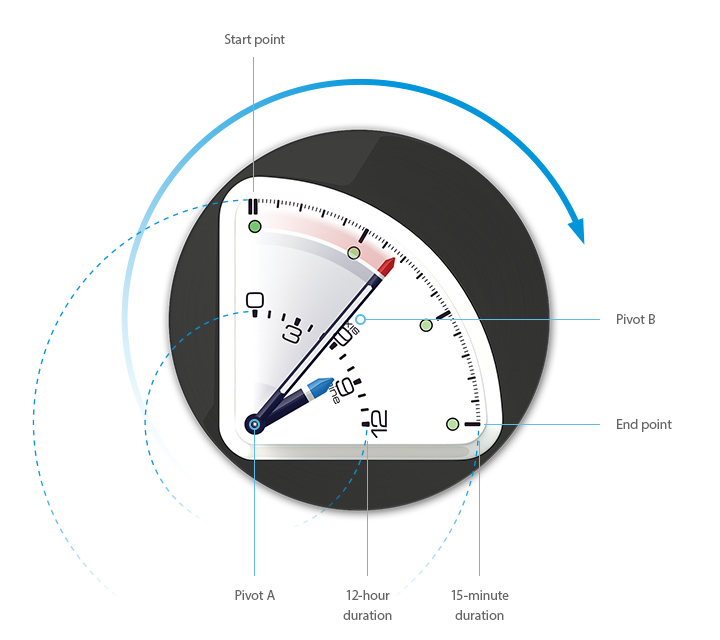
Quadrants and Transitions
